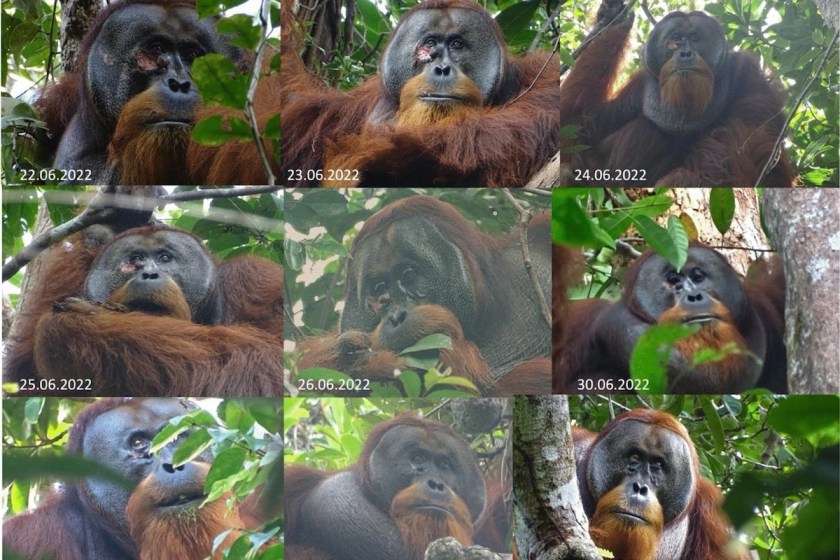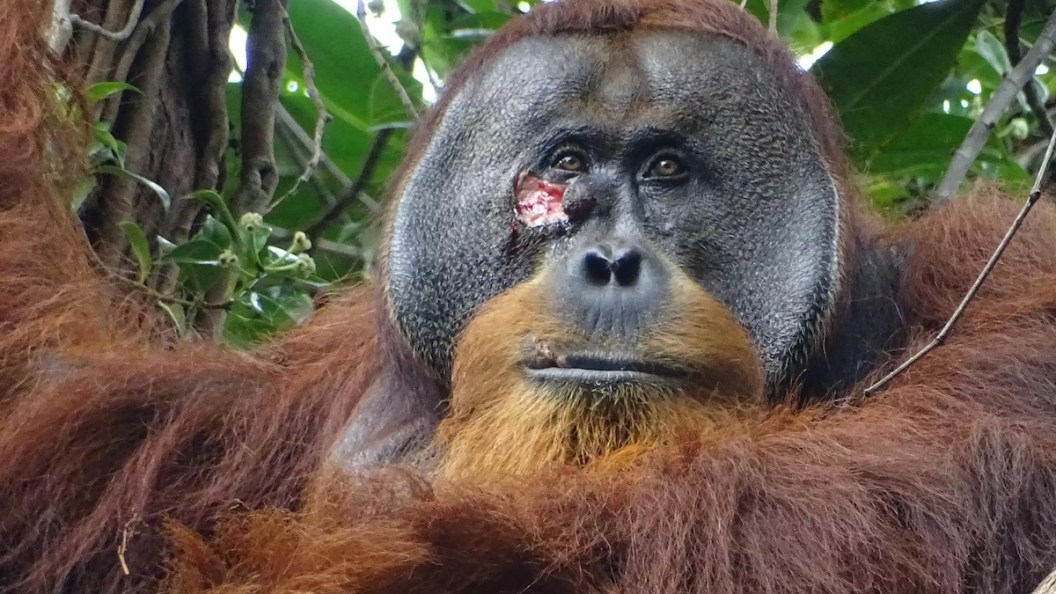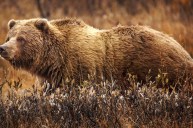On Thursday, a group of scientists published the first record of an orangutan treating a physical injury with medicine. According to the recent paper in Scientific Reports, there's only one other recorded instance of a non-human conducting such behavior.
In a press release, Isabelle Laumer, a cognitive biologist and primatologist and one of the lead authors of the paper, explained that they made the discovery at the Suaq Balimbing research site in Indonesia, which is a protected rainforest area home to approximately 150 critically endangered Sumatran orangutans.
In the paper, Laumer said they saw a male orangutan named Rakus with a facial injury, which he probably sustained from fighting another male. They watched Rakus selectively rip off leaves from a liana plant, chew them up, and then repeatedly apply the resulting juice to his injury.

Photographs of Rakus, the male Sumatran orangutan, as his facial wound healed after applying the medicine. They were taken from June 2022 to August 2022. Credit: Scientific Reports
What makes liana plants so special is that they provide "analgesic and antipyretic effects and are used in traditional medicine to treat various diseases, such as malaria," Laumer said. As a result, Rakus's wound did not show signs of infection and had actually started to close within five days.
"Interestingly, Rakus also rested more than usual when being wounded. Sleep positively affects wound healing as growth hormone release, protein synthesis and cell division are increased during sleep," Laumer said.
Caroline Schuppli, an evolutionary biologist and orangutan researcher who served as a senior author of the paper, explained that orangutans rarely eat the liana plant, so they think the animal may have discovered its healing effects by unintentionally applying it to other injuries.
"It is possible, that wound treatment with [the plant] by the orangutans at Suaq emerges through individual innovation," Schuppli said.
According to the paper, this is the first report of active wound management with a "biological active substance" by a great ape, and it could provide new insights into the existence of other forms of self-medication by humans' closest relatives and the evolutionary origins of wound medication.
"It is possible that there exists a common underlying mechanism for the recognition and application of substances with medical or functional properties to wounds and that our last common ancestor already showed similar forms of ointment behavior," Schuppli said.




